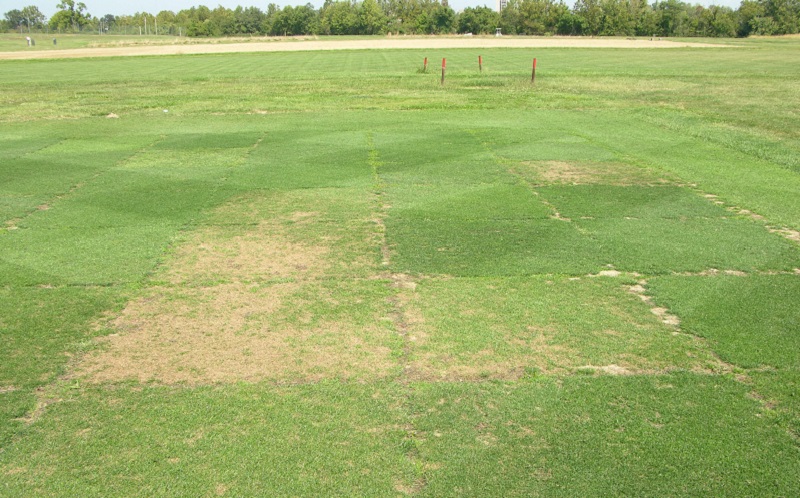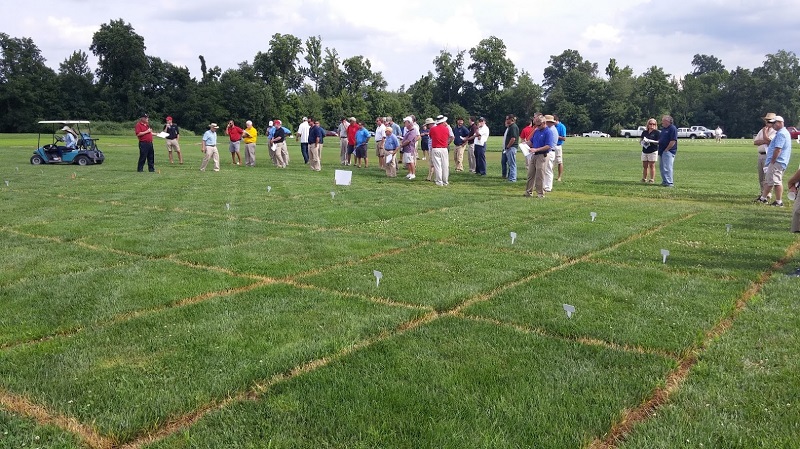Maryland is located in a transition zone. Both cool season and warm season turfgrass can be grown, but the climate is not favorable for the growth of either group of grass over the entire year. To establish and maintain turfgrass, site preparation, the choice of cultivar, and correct management practices are essential. In western Maryland, or the mountain region, cool season grasses are better adapted. The coastal plain, southern Maryland and the eastern shore, as well as the piedmont region and central and northern Maryland, have warmer winters. Both cool season and warm season grass can be grown there. Tall fescue grows throughout Maryland.
Numerous new turfgrass cultivars continue to be developed and released by turfgrass breeders. However, while many of these cultivars are adapted to the environmental conditions that prevail in other regions of the country, many are not adapted to the specific environmental conditions that occur in the transition zone. Thus, to identify cultivars that perform well in this region, extensive cultivar trials are evaluated each year at the University of Maryland and Virginia Tech. The cultivar performance data obtained at various trial locations are reviewed annually in a joint meeting of university researchers and representatives of the Department of Agriculture of both states.
The use of recommended cultivars usually results in a turfgrass stand of higher quality and density, greater stress tolerance, lower nutrient requirements, less water usage, and fewer pest problems. Also, the use of recommended cultivars generally has the benefits of greater water infiltration, reduced need for pesticide applications, reduced water runoff, and the enhancement of the environmental benefits of properly managed turfgrass.
The National Turfgrass Evaluation Program (NTEP) provides information on the testing and adaptation of the turfgrass cultivars, searchable by state and NTEP test location. Maryland test results and recommendations can be found on the NTEP website. Recommendations for Maryland are also published and updated annually in Recommended Turfgrass Cultivars for Certified Sod Production and Seed Mixtures in Maryland. 2016. University of Maryland. When selecting cultivars for a specific site, considerations include the desired use, site and microclimate conditions, disease resistance, and spring transition traits.
The Maryland Department of Agriculture administers the Maryland Certified Sod program. Certified sod must contain only the recommended cultivars. Requiring certified sod in specifications guarantees that the sod contains currently recommended cultivars, has been seeded in recommended percentages, and is of high quality with minimal pest problems.
Best Management Practices
- Follow grow-in BMPs as provided in the “Planning, Design, and Construction“.
- Use only Maryland-certified sod.
- Select cultivars that are adapted to the desired use, taking note of disease resistance, spring transition traits, and other traits such as shade and wear tolerance.
- Develop and implement strategies, such as hydro-seeding or hydro-mulching, to effectively control sediment, minimize the loss of topsoil, and protect water quality.

Gray leaf spot incidence difference in fairway perennial ryegrass in NTEP trial. Photo credit: Thomas Turner.

Field day at University of Maryland showing NTEP trial plots. Photo credit: Chris Harriman.

